Danish MCM Stoneware Hjorth, Bornholm, Erik Hjorth Era, Elegant Shouldered Vase
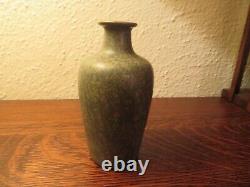
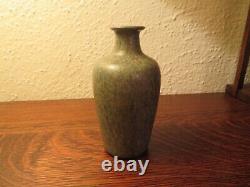
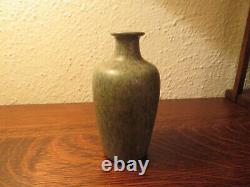
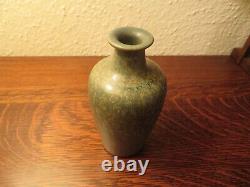
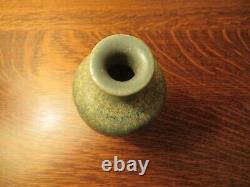
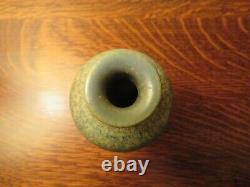
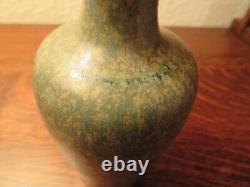
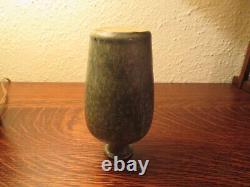
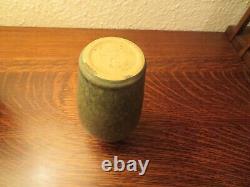
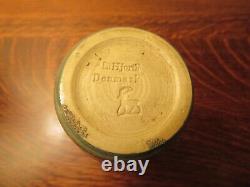

Danish MCM Stoneware: Hjorth, Bornholm, Erik Hjorth Era, Elegant Shouldered Vase. Lauritz Adolph Hjorth was born in 1834 in Ronne, Bornholm to Lars Hansen Hjorth and Marie Kirstine Knudsen. From an early age, he showed interest in the ceramic arts and first learned his trade at. Edvard Christian Sonne's Faience in Store Street, Ronne. After that he went out into the world to improve his skills, working at several ceramics companies in Germany, the Czech Republic and France and undergoing training at the Academy in Berlin. Upon his return to Bornholm in 1959, he was better equipped than most to establish a ceramics factory, which he did that year in the home of his parents on Østergade in Ronne. Initially he produced terracotta utility ware, including water coolers and flower pots. After just three years, Lauritz Hjorth moved the business to Krystalgade, where it expanded the range of its products to include decorative items such as vases and figurines.
Around the same time, he married Agnethe Marie Wolffsen, daughter of the owner of Søholm, another important Bornholm ceramics factory. They went on to have 11 children, a number of whom were to become involved in the business. Of these eleven children, three continued the Hjorth stoneware legacy- Peter Christian Hjorth.
In turn, their legacy was sustained by two subsequent generations before the factory closed. The Hjorth factory employed only about ten workers in 1865 but. Expanded several times over the years from its initial modest premises on Krystalgade.
Various buildings were built over the years surround a common courtyard in the center. The two-story factory building, perpendicular to the dwelling, was built in 1871, when the old workshop building became too cramped. On the first floor were 11 wheels for throwing pottery. One for each window facing the courtyard, while the ground floor housed the kiln and rooms for storing clay.
Later, a new two-story structure was build, with the second story devoted to a work room for the factory's decorators. The factory's building were placed on an historical register in 1984. The factory continued to operate until 1992, when an agreement was reached to convert it to a museum, which as opened to the public in 1995. Stoneware production was introduced at Hjorth in 1902 by one of Lauritz Hjorth's sons, Hans Adolph Hjorth. First introduced during Lauritz Hjorth's lifetime and while he still managed the company, the Hjorth stoneware legacy was continued and expanded on by his children. In addition to Hans Hjorth, who produced the company's first stoneware to be recognized for its artistry, Peter Christian Hjorth also played a critical role, co-managing the company with Hans after their father's death in 1912. From 1932, Peter Hjorth was the company's sole owner. Less recognized than her brothers, Thora Margrethe Hjorth also played an important role in the company's stoneware production, leading for many years the artists responsible for its decoration. The next generation, including Lisbeth Bruhn Munch-Petersen, Gertrud Vasegaard, and Erik Hjorth, the son of Peter Hjorth.Erik Hjorth also assumed overall leadership of the factory following his father's death in 1959 and continued in that role until his death in 1982. The Hjorth family stoneware tradition was then carried on by a third generation of descendants of Lauritz Hjorth. The most prominent of this generation is Ursula Munch-Petersen, daughter of Lisbeth Bruhn Munch-Petersen and the poet Gustaf Munch-Petersen. Also of this generation is Marie "Myre" Vasegaard, daughter of Gertrud Vasegaard, and Erik Hjorth's daughters Marie and Ulla. Marie and Ulla Hjorth led the factory from the death of their father in 1982 until its transformation into a museum one decade later.
As the third generation of the Hjorth family to play this role, Erik brought new artistic energy to Hjorth stoneware production, attracting young potters to work and study and producing new products and refining glazes, including the brown glaze made from local raw materials. Among the young talent developed by Erik Hjorth were his daughters Marie and.
Ulla, who first trained as potters at. The factory and then went on to study at the Design School in Copenhagen. Initially under-appreciated by collectors of Danish ceramics, Hjorth stoneware designed during the Erik Hjorth era, signed with the L. Hjorth Danmark and stag shopmark and no artist signature, is increasingly coming to be recognized as some of the highest quality ever produced in the company's 120+ year history.
In addition to his artistic role at Hjorth, Erik ensured the continuity of the business after taking leadership on the 100. Anniversary of the factory's operations at the Krystalgade location. In many ways, Erik served as a bridge across the generations of Hjorth stoneware artists, taking over from his father, working alongside his aunt Thora, and introducing his daughters Marie and Ulla to the family craft. Marie and Ulla Hjorth then took over the factory after their father's death in 1982, leading it for ten years and then bringing permanence to the family's legacy by transforming the factory into a museum.This elegant shouldered vase is an outstanding example of Hjorth stoneware during the Erik Hjorth era. This piece, with a beautiful mottled grey glaze with yellow and blue tones, likely dates from the 1950s. This form, which is not serial production, is particularly prized by Hjorth collectors. The dimensions of the piece are 5.25 inches high and approximately 2.75 inches wide at the shoulder. This piece is in excellent original condition with no observed flaws.
This piece is part of a small collection of unusual pieces from the Erik Hjorth era in different forms and glazes that I will be listing in the coming days. For collectors of Erik Hjorth's work, please let me know if you are looking for something special since I have other interesting pieces in my collection. The bulk of my collection is Danish stoneware from the 1920s into the 1970s.
The bulk of my Danish collection consists of Arne Bang, Saxbo, Jais Nielsen, Nils Thorsson, Erik Hjorth, and Ejvind Nielsen. I have done extensive research on these and other artists and workshops and would be happy to share that with interested buyers. I also have substantial collections of American, French, Belgian and other 20th century northern European art pottery. Over the coming months I will be listing a wide range of pieces from my collection.Please check out my other listings and add me to your list of saved sellers to receive notification of new listings. This item is in the category "Pottery & Glass\Decorative Pottery & Glassware\Vases". The seller is "potsandplates" and is located in this country: US. This item can be shipped to United States.
- Handmade: Yes
- Time Period Manufactured: 1950-1959
- Production Technique: Pottery
- Item Height: 5 inches
- Subject: Design
- Vintage: Yes
- Era: Mid 20th Century (1941-1969)
- Country/Region of Manufacture: Denmark
- Origin: Scandinavia
- Material: Stoneware
- Finish: Matte
- Production Style: Art Pottery
- Additional Parts Required: No
- Brand: Hjorth
- Style: Mid-Century Modern
- Antique: No
- Color: Gray
- Original/Licensed Reproduction: Original
- Backstamp: Incised
- Theme: Studio
- Type: Vase
- Original/Reproduction: Vintage Original

